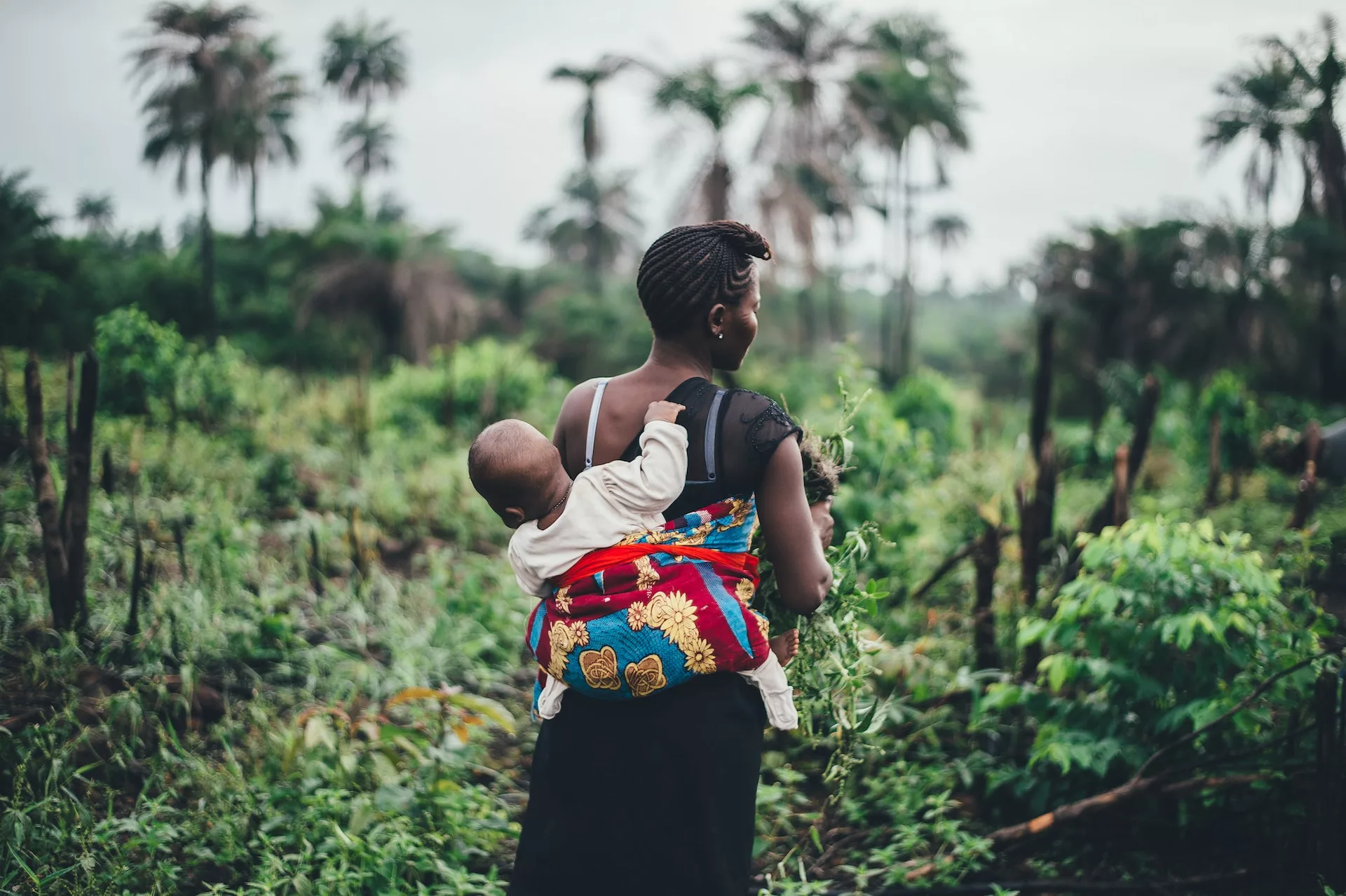It is often thought that females are biologically programmed to be mothers, and it is in their nature to be care-givers. As this misconception has tarnished societal perceptions, the true role of mothers, and fathers, in upbringing must be understood. Photo credit: Annie Spratt via Unsplash
This is one of the long-held dogmas of evolutionary and reproductive science. Across a wide range of species, we see active males and passive females: each male likely has several partners, competing with other males for female attention. Meanwhile, females are non-violent and simply wait to be approached by “the one”. While this is indeed common practice, we nevertheless see “unexpected” ambitions in females, highlighting how our upheld conceptions of male-female mating behaviour may need challenging.
Having conducted pioneering research in this field, anthropologist Sarah Blaffer Hrdy is a key figure in the discussion of female ambition and promiscuity. While invested in the primate world, she also extends her knowledge to the discussion of the human female condition, with a focus on the role of mothers. Herein, we will explore just some of her work, asking whether female passivity is truth or legend.
Society and the History of Research
There is a socio-political factor playing into scientific research in this area. An overwhelming number of acclaimed scientists investigating species’ sexual behaviour have been male. Hrdy speculates that researchers are guided by whom they sympathise with, and that these sympathies stretch to the animals of their own sex. In addition, the scientists of the past with the largest platforms have almost exclusively been male, including prominent and influential figures such as Charles Darwin and Angus John Bateman.
The Bateman paradigm, in brief, discusses the behaviours of houseflies (Drosophila). Herein, Bateman observed a larger range of reproductive success in males than in females. Since only successful males can pass their sperm to females, Bateman proposes that the male’s actions are much more determinative of the genes passed to future generations. This concept is expanded in the work of Robert Trivers, who subscribes to the idea that the greater maternal contribution to the offspring (due to the relative size of the egg compared to the sperm) suggests that the mother has a larger role in the upbringing of said offspring due to a greater protective instinct. Since protection confers survival, males will compete for the most attentive females, aiming for those which will ensure the perpetuation of the species.
The relative “inexpensiveness” of the sperm (because of the cell’s small size) is key to the polyandry of males. They seek out multiple fit females in order to pass their genes quickly, ensuring their “legacy” is held in future generations: the more the male mates, the more successful he is. On the other hand, females are subdued, only needing to select a single, performative male to contribute their relatively small portion towards the fitness of her offspring. Females are uninterested, with a predetermined sexual success based on the contents of their eggs rather than by the number of mates: they are passive, they are “coy”.
They [males] seek out multiple fit females in order to pass their genes quickly, ensuring their “legacy” is held in future generations: the more the male mates, the more successful he is.
Of course, by no means do I intend to deplore these male scientists, whose research has led to the expansion of our understanding of evolutionary and behavioural biology. Nevertheless, it is important to recognise the ignored behaviours, the subtle (and not so subtle) matters of the female body. While herein interested in the realm of science, it is also significant to apply this outlook to the general society in which these male scientists conducted their research. It begs the question as to whether our society impacts our observations, or whether our observations are accurate, impacting our society accordingly.
Attachment Theory
Attachment Theory is applied to long-term relationships between different subjects, and is particularly relevant when considering parents and their children. The theory states that offspring have an instilled desire to form close bonds with their primary caregiver. In most cases, this is deemed to be the mother. Constructed from observations in primates, the phenomenon of Attachment Theory is seen in how a mother disallows any other subject access to her baby, thereby deeming herself its sole carer. This has not only influenced our concepts of animal behaviour, but has also impacted our social structures.
Many mothers around the world have been shamed for asking for help or sending children to nursery, because they are meant “by nature” to cope alone. This places a great amount of pressure on women, particularly first-time mothers, who now feel they must play the “perfect carer”. In giving themselves over to their child, mothers may fall into the “loss of self” – a state in which mothers feel disconnected from their past selves, with acute links to postnatal depression. In spite of this, it has been seen time and again that this is not and does not have to be the case.
A co-operative upbringing
Monkeys are known as cooperative breeders. This describes a social structure in which mothers get support in rearing their offspring — but only from those peers who are willing. Here, it is the “most endearing” offspring that gain the most support in their early life. For example, the larger the eyes, the more appealing to a potential carer. These “appealing” offspring survive by being taken under the wing of multiple surrogate- or “allo”-mothers. Thus, their genes are perpetuated, whether that be features (such as large eyes) or behaviours (such as being less boisterous).
In Hrdy’s work, it was revealed that females in primate populations have multiple partners. This does not stem from idle promiscuity, however. Instead, in an environment in which males attack the babies of females they have not mated with, female polyandry is simply a means of ensuring offspring survival. Thus, the males that a female has had sexual encounters with, whether brief or enduring, become protectors: what Professor Jeanne Altmann prescribes appropriately as ‘god-fathers’.
Intriguingly, the dogma of female passivity is further combated by the finding that mothers will kill the offspring of their daughters. Indeed, the social structures within studied primate populations are upheld by this behaviour, supporting the survival of the mother’s offspring by keeping its siblings as carers.
What does Dad do?
Flipping the coin, it is important in this conversation to consider how the concept of the promiscuous male and coy female factors into the paternal role and its stereotypes. Traditionally, we may view the father primate as purely biological: he provides his genes during fertilisation, before moving on to the next female. Interestingly, however, this is largely not the case. In fact, in multiple New World primate populations, it is the male who does most of the carrying of the infant to ease the female’s burden (in the case of twins in marmosets, for example).
In addition, males play key roles in their offspring’s development. Fathers show their sons defence techniques, be that in defence of their peers or their territory. Significantly, this is not confined to monogamous relationships, as previously supposed. Instead, male primates such as baboons have been seen to protect the offspring of female partners, even if the babies are not their own. Thus, by mating with several males, a female engages more animals in a duty of care, increasing the chance of survival of her offspring.
If there is a key lesson to take from all of this, I propose simply: we did not evolve to care alone.
In all this, it becomes obvious that female ambition is not as unnatural as originally supposed. The pioneering work of Hrdy, alongside the countless other female scientists who have contributed to the field, has changed our understanding of reproductive behaviour in primates, allowing us to reflect on how these “laws” apply to human society. In a misinterpreted world where females are monogamous and sacrificially loyal to their offspring, it is difficult for new mothers to reach out for help. As a mother herself, Hrdy notes the importance of exposing these previous misconceptions and taking new information to challenge current societal beliefs. If there is a key lesson to take from all of this, I propose simply: we did not evolve to care alone.





